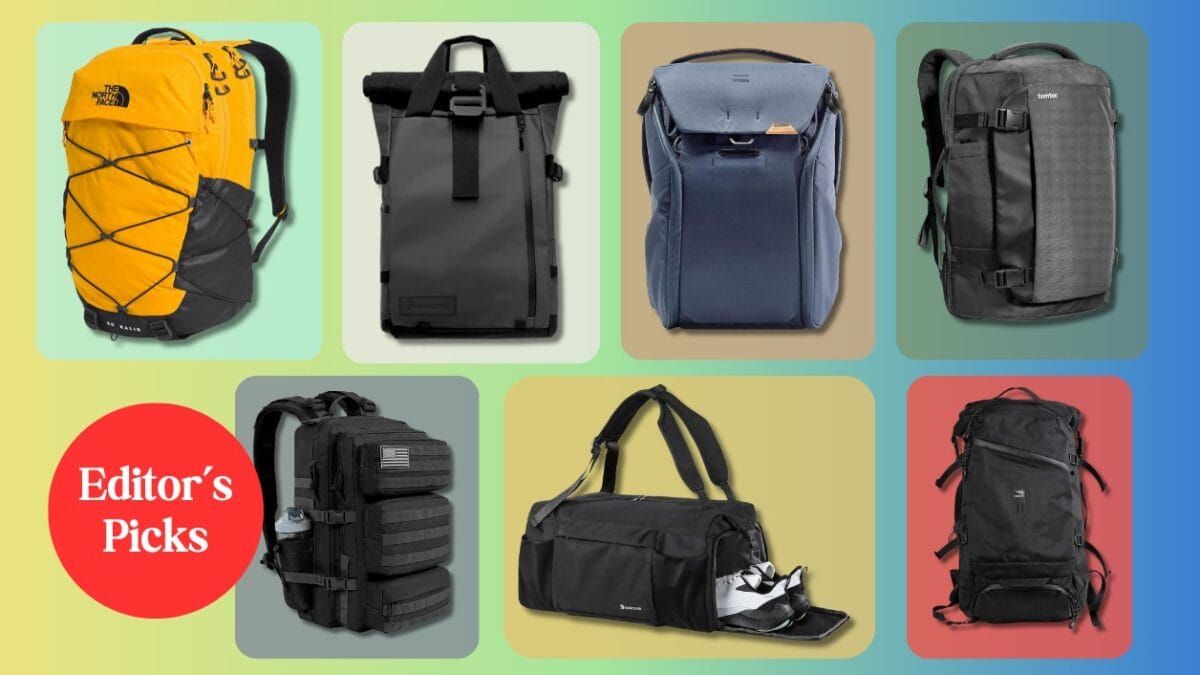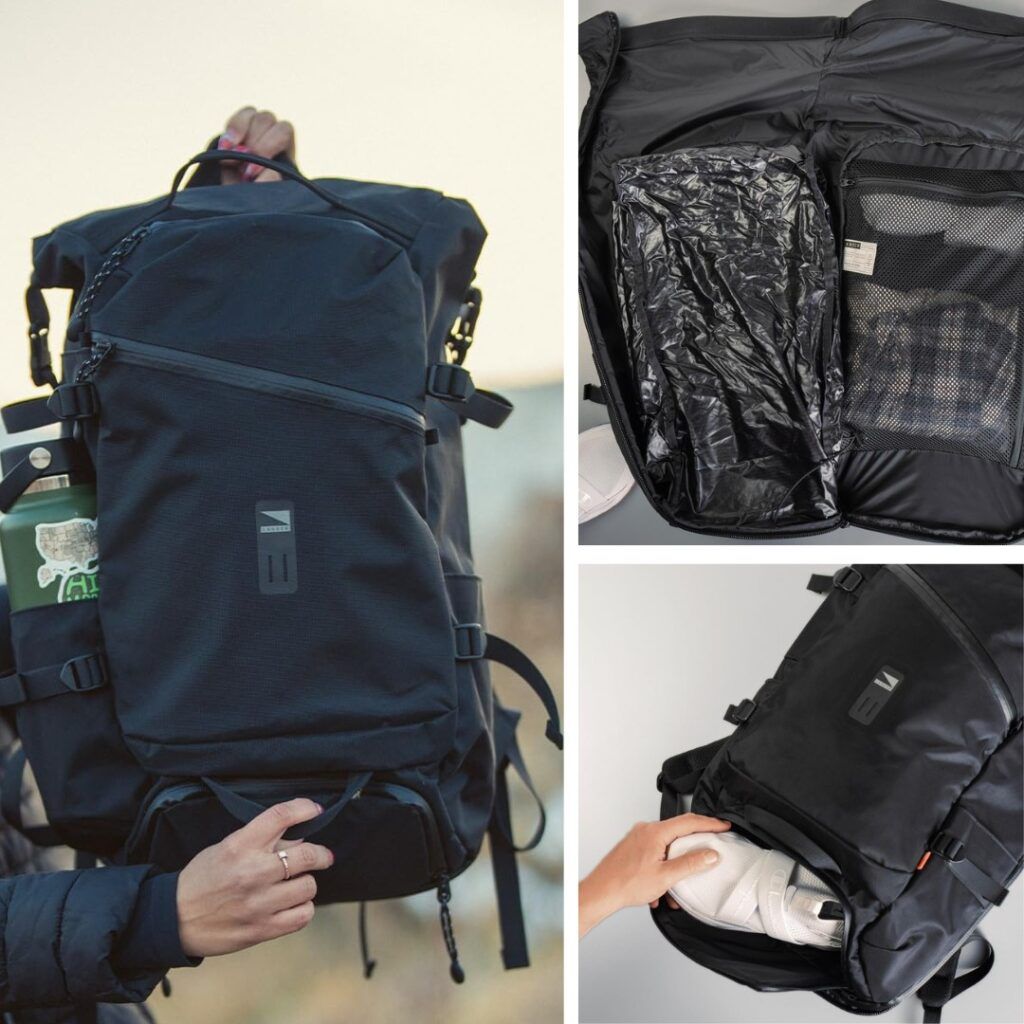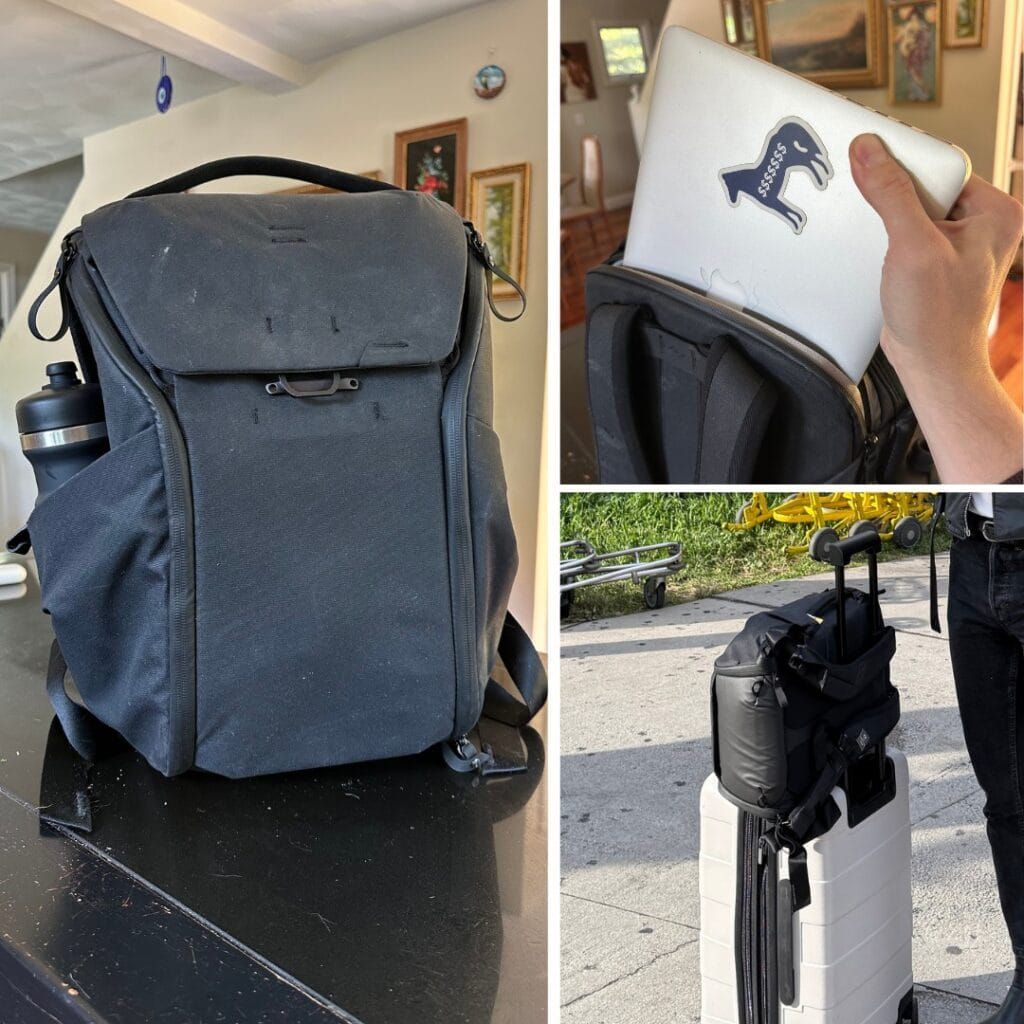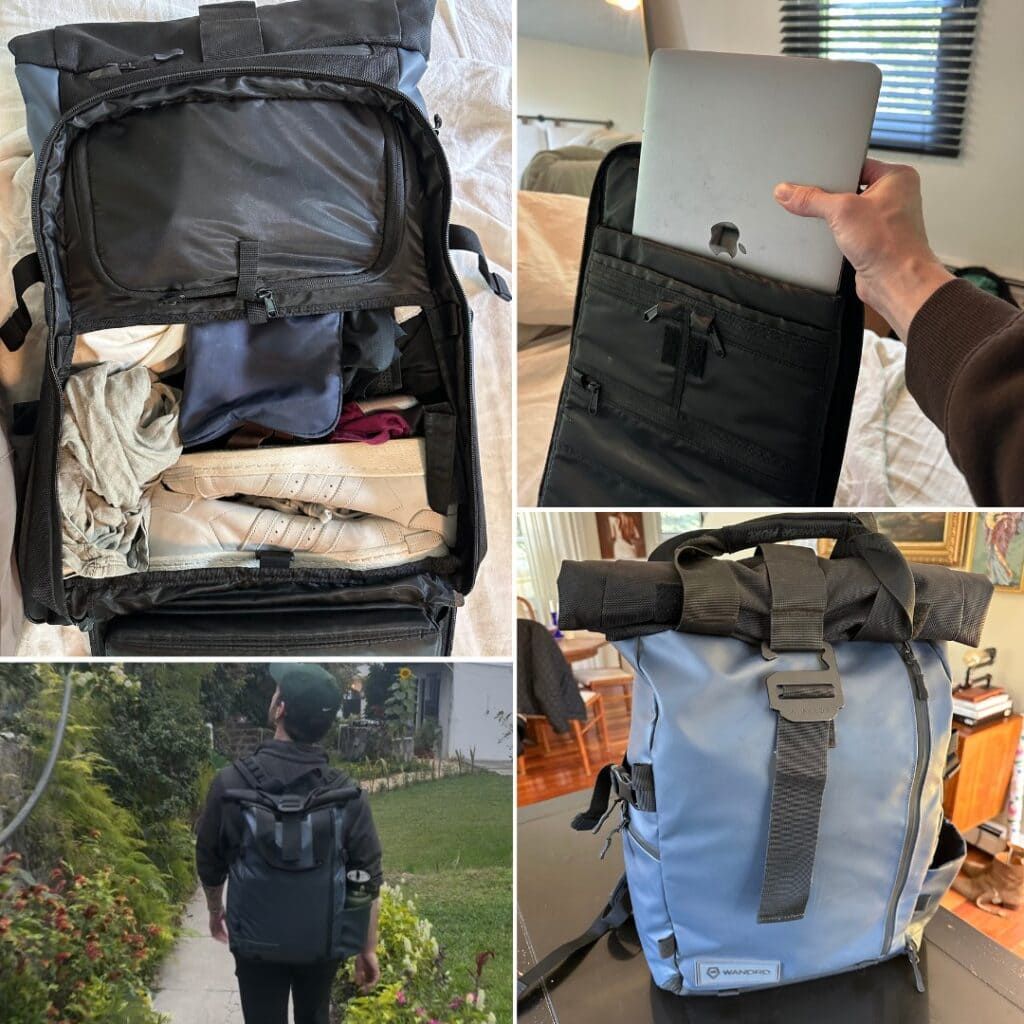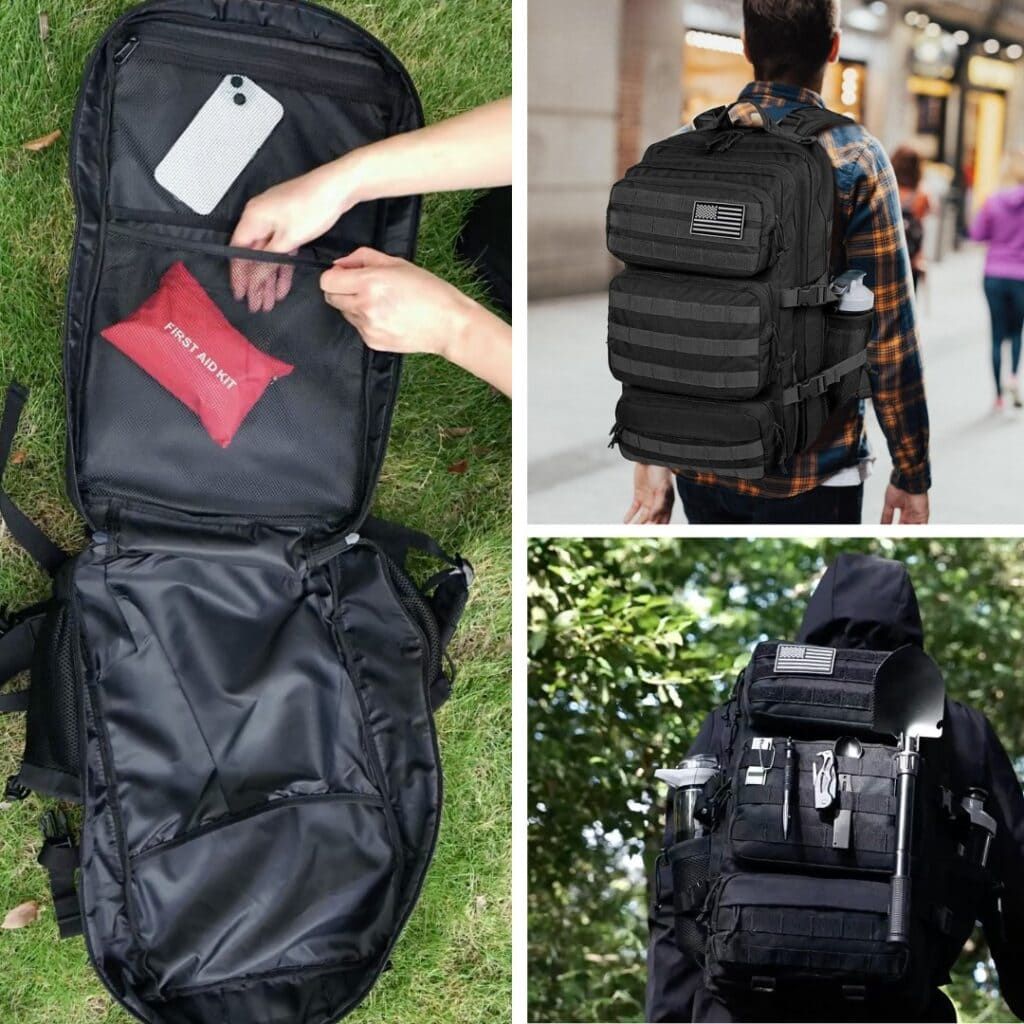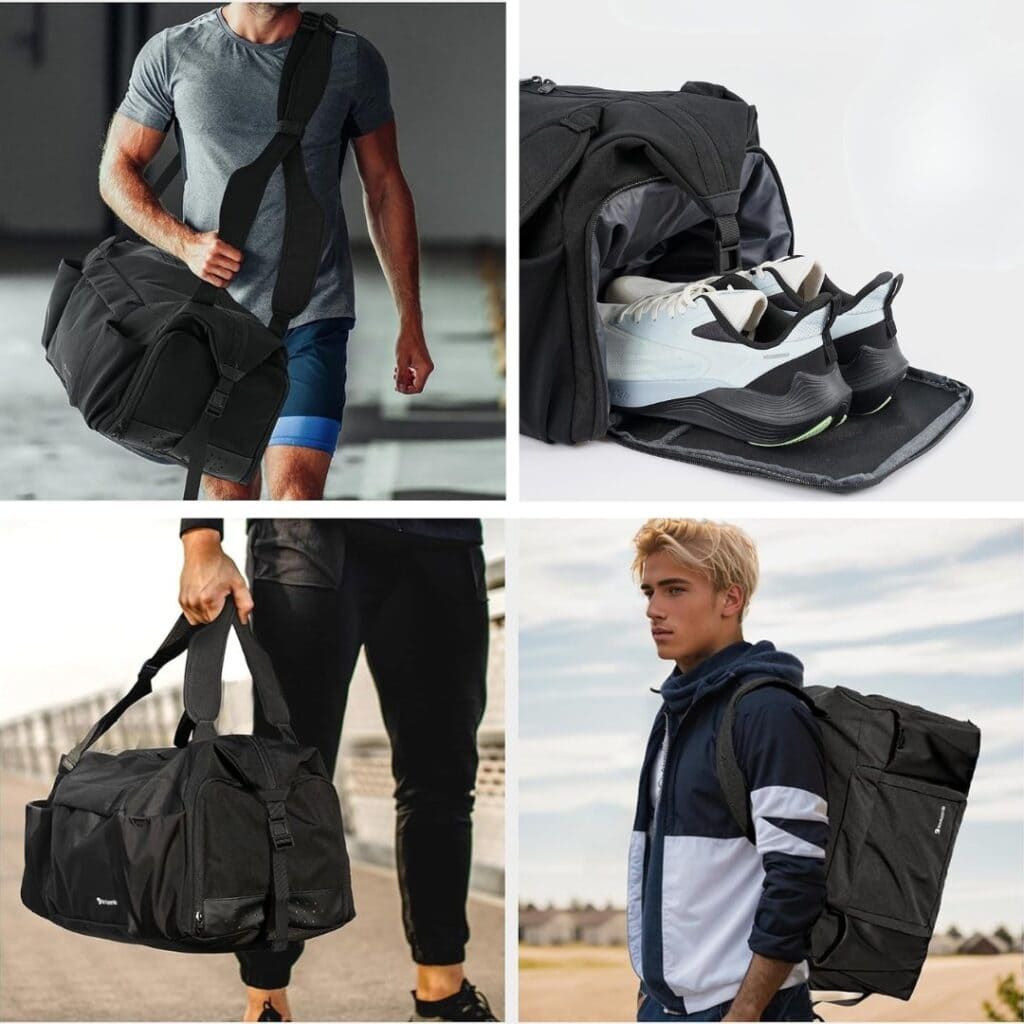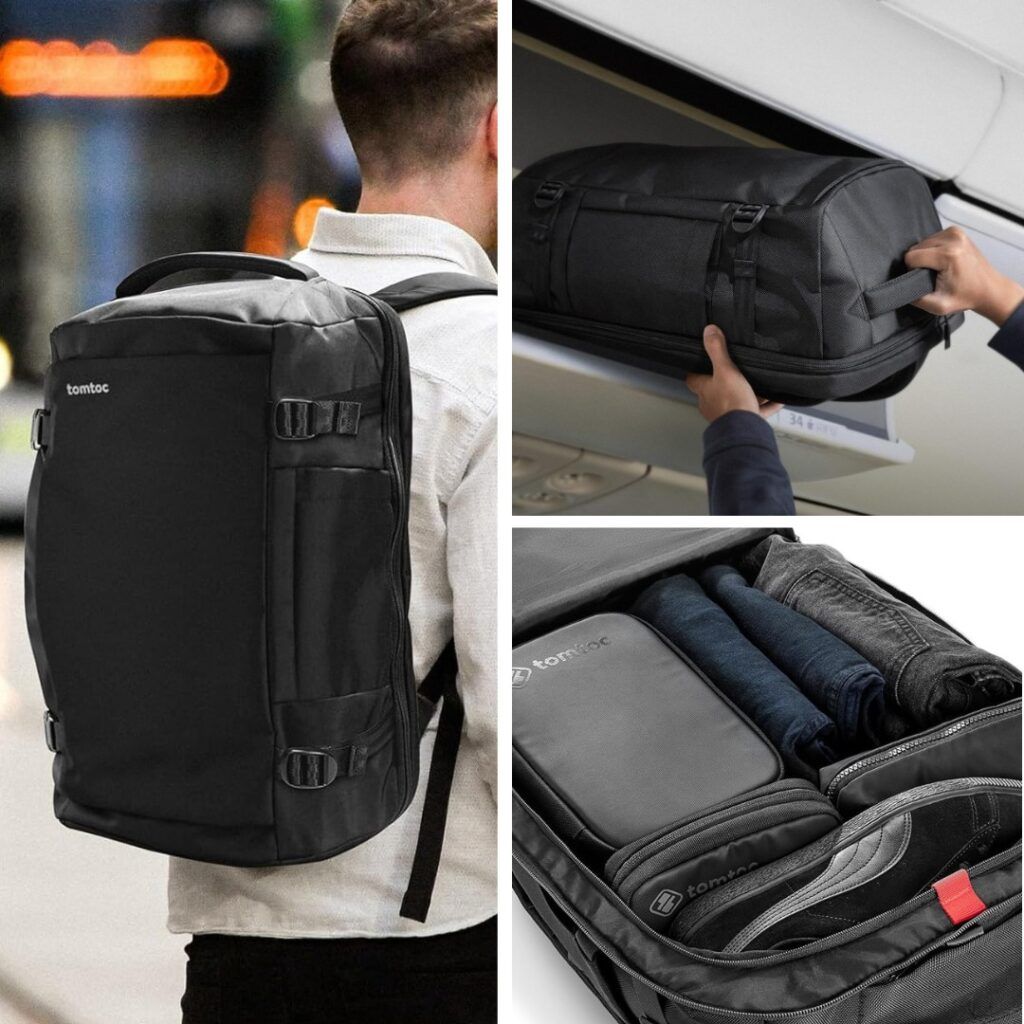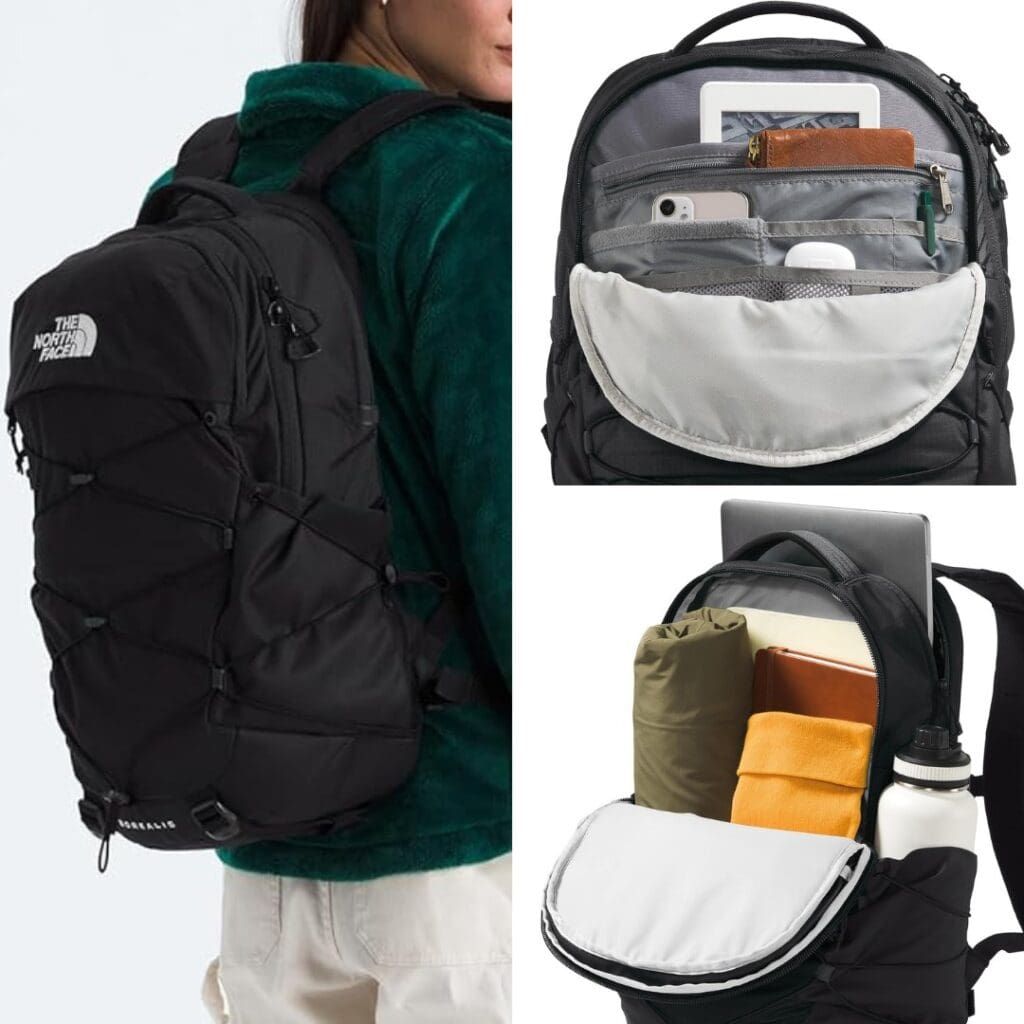I tried 13 travel backpacks, and these 7 performed the best.
As a remote worker with a travel addiction, I’ve become something of a travel backpack connoisseur. Whether I’m hopping on a plane, train, or bicycle, these bags allow me to get where I need to go with minimal fuss and baggage fees.
The Lander Traveler Backpack impressed me with its superior organization during a lively New Orleans bachelorette party, while the 50L Military Tactical Backpack delivered exceptional size and durability. For shorter travels, the Kookoomia Gym Bag’s convertible design proved invaluable, and the PRVKE Travel Backpack perfectly balanced style and function on my two-week trip to Guatemala.
Whether you’re a business traveler needing easy laptop access, a hiker seeking rugged performance, or someone looking to fit an entire trip of supplies into one bag, I’ve found options that excel in every category.
My Top 7 Picks
- Lander Traveler Backpack: Best All-Around
- Peak Design Everyday Backpack: Best for Weekend Trips
- PRVKE Travel Backpack: Best for Long Journeys
- 50L Military Tactical Backpack: Best Bargain (Under $40!)
- Kookoomia Gym Bag: Best for Gym Rats (Under $30!)
- Tomtoc Travel Backpack: Best Carry-On Replacement
- North Face Borealis Backpack: Best for Hiking
Honorable Mentions
Carhartt 25L Classic Backpack
The Carhartt 25L Classic Backpack impressed me with its low price, exceptional durability, and no-nonsense approach to organization, easily handling everything from weekend camping trips to daily commuting without showing signs of wear. The water-repellent fabric proved its worth during several unexpected downpours, while the simple but thoughtful pocket layout made accessing essentials straightforward even in crowded environments. This pack is ideal for pragmatic travelers who value rugged reliability over fancy features and prefer a classic aesthetic that works in virtually any setting.
Bange Business Smart Backpack
The Bange Business Smart Backpack stood out with its impressive tech organization and professional appearance, offering a remarkable balance of sleek styling and practical features at a competitive price point. I particularly appreciated the USB charging port during long travel days and the dedicated shoe compartment that kept my dress shoes pristine even when packed alongside casual travel gear. This bag is perfect for business travelers who need to maintain a polished appearance while efficiently organizing tech accessories, documents, and a change of professional attire.
Osprey Farpoint 40L
The Osprey Farpoint 40L nearly made my top list with its exceptional harness system and impressive capacity that somehow maintains carry-on compliance for most airlines worldwide. The zip-away suspension system allowed me to transform it from backpack to duffel in seconds, while the front-loading main compartment made packing and accessing contents remarkably convenient compared to traditional top-loaders. This versatile pack is ideal for extended travel through multiple environments, particularly for those who need serious carrying comfort for heavier loads but still want the flexibility of carry-on compatibility.
My Methodology
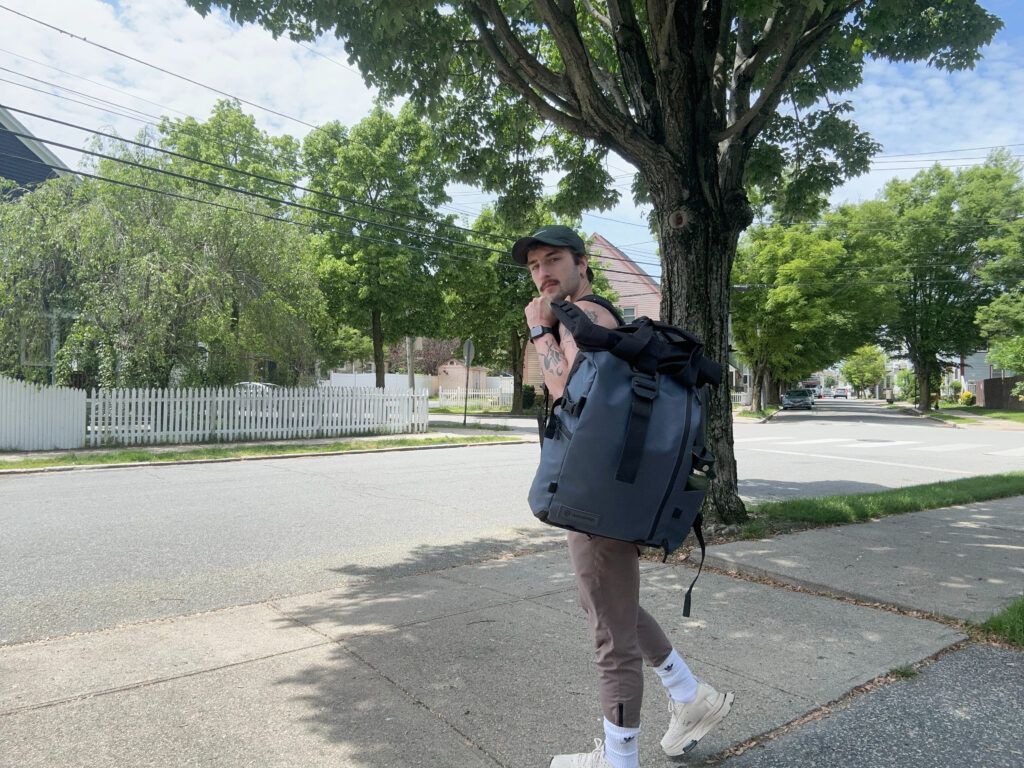
A lot of my testing results are admittedly subjective. For reference, I’m 5’6″ and relatively fit, so my experience with comfort and fit may differ from someone with a different body type or fitness level. Everyone’s needs are a little different, and what works perfectly for me might not be ideal for you, especially if you’re significantly taller or have specific requirements I didn’t encounter in my testing. For example, I’m not a photographer, but if you travel with a DSLR, you might want to find a dedicated camera backpack. I’ve heard great things about this one.
That said, I evaluated each backpack across four primary categories that I believe matter to most travelers. Durability came first—I examined stitching, materials, and zipper quality, then subjected each pack to real-world abuse through multiple trips. Comfort was assessed through extended wear periods with various load weights, paying particular attention to strap design, back panels, and weight distribution. For organization, I considered not just the number of compartments but their accessibility, logical placement, and how well they accommodated different types of travel gear. Finally, I looked at extra features that enhanced versatility, such as weatherproofing, security elements, and adaptability across different environments.
My goal wasn’t to find a perfect backpack (which doesn’t exist), but rather to identify which packs excel for specific travel styles and scenarios based on real-world performance. Your perfect pack ultimately depends on your unique travel patterns, physical preferences, and organizational style, but these recommendations should provide a solid starting point for finding your ideal travel companion.
